Text
Internship Review- Looking Back, Looking Forward
I left my internship more than a month ago. In the time that I have been re-adjusting to college life here in Minnesota, I realized that my internship taught me so much about myself as well as good practices for achieving long term and short term goals. When I started the EBBSA internship, I wasn’t quite sure what to expect. EBBSA was new and still in the process of establishing its goals and solidifying its position as the powerhouse collective it is becoming. Although I started out unsure of what lay ahead, I soon became very comfortable in the flow of work and found so much joy in the progress that I was able to make.
For this internship, I had the honor of working from the building of one of EBBSA’s partners--SAY Si-- with their awesome communications manager, Stephen Guzman. I first have to say that working with Stephen just made my internship that much more amazing. He was so nurturing and relaxed but always professional. It was awesome to work from someone so accomplished and intelligent! Knowing I would have Stephen to lean on and to learn from each day made me feel more confident and his positivity made my experience so much more fun.I was immediately brought into the internship to help out with the annual summit. Once again, I had no idea what to expect and it turned out that the summit was huge! I tried helping as much as I could but I was somewhat nervous just because I didn’t know anyone yet. The summit was really fun and it gave me an introduction to both the work being done by EBBSA and the potential for connections that lay ahead. I soon learned that my job would entail strengthening the EBBSA “brand” and I began to work on establishing a social media presence. I worked on learning more about all of EBBSA’s partners (Which was quite an undertaking!). Because I was the first official EBBSA staff member, it was important to me to get to know about all of the different partners and the services they provide to students during OST.
My favorite part of this internship was that it was so multifaceted. As the summer progressed, I was given tasks from Stephen and the engagement working group but when I completed those tasks, I was truly free to do things such as schedule visits, post on social media and create blog posts. I was responsible for sending out and managing emails, I worked on both the old and new websites, I met nonprofit organizers from all over San Antonio and I even helped with different SAY Si tasks. With all of these responsibilities, I got into the habit of making “to-do” lists and visualizing what my long-term and short-term goals were for the summer. To this day, I use the same google document bullet points to effectively check off the tasks I need to accomplish. I also utilize the same email program for the organization that I co-facilitate-- the Mixed Race Identity Collective. Finally, this internship was unique because of just how many connections I was able to make. One of the major differences I have seen between Minnesota and San Antonio is the lack of community that I feel here. This college is, as my advisor, Marcos Ortega, a fellow Texan, noted, professors and students here tend to be very individualistic. I loved this summer and now, with this comparison, I can see that the amazing community that being a part of EBBSA allowed me to build, was one of the reasons why I was so happy. Now that I understand the importance of community, I actively seek out and maintain connections with mentors in order to foster the sense of community that I need in order to feel like I can make it through my last year in college. I definitely envision myself continuing to work in conjunction with OST partners in San Antonio be it something I do in my free time or something that I incorporate into my future career.
Looking back on my experience as I settle into the routine of college life once again, I can say with certainty that my internship was much more than a job--it was a learning experience where I was granted an inside look at work done by amazing people which will ensure a brighter future for San Antonio and the world at large.
#EBBSA#excel beyond the bell#Excel Beyond the Bell San Antonio#Excel Beyond the Bell SA#San Antonio#youth development#OST#Internship#Learning Experience#Looking Back#College Life#Looking Forward
0 notes
Text
YMCA Takas Park Camp
One of the final visits I made this summer was to another YMCA camp, Takas park. Because I had experience working with the YMCA Power Scholars camp, I was able to compare my personal working experience to what I learned about and observed at Takas Park. Unlike Power Scholars, this camp’s sole focus is physical activity, reading and arts and crafts and it is much smaller - at the time that I visited, 55 children were in attendance but the Takas Park summer camp has space for up to 80 kids. However, similar to Power Scholars, the students had the chance to take field trips each week to educational or fun sites around San Antonio such as the DoSeum, the Zoo, the Witte, and a bowling alley. This camp keeps kids engaged by following fun themes each week, such as dinosaurs, space, super hero, patriotic, and time traveling, upon which activities will be based.
Each day, the camp begins with opening ceremonies where the kids recite the core values of the YMCA. This camp serves students from ages 5-13 and the children are split up by age groups. Some YMCA camps have food grants so that they can offer free meals during the hours of the camp to the children - the camp at Takas park is one of the sites that qualifies for the food grant based on their zip code. The facilities at Takas park are extremely well maintained and welcoming! Inside the air conditioned main building, there is a kitchen so that the free lunches may be easily distributed. The park also included a partially shaded playground, a patio area, a field and basketball courts.
To keep this camp running, tuition is required but there are scholarships available. This camp runs all the way until the week right before school starts! This point has a huge impact. Because of the YMCA camp at Takas Park, students will have activities, will stay active and will have at least one meal a day for the entire summer (11 weeks, June 8-August 21). It was so interesting to learn about this camp because, although it was also run by the YMCA, it varied so much from the camp where I worked. This visit was a testament to the variety of summer camps that are available to San Antonio youth!
#YMCA#ymca san antonio#Camp#Summer#Summer camp#youth development#youth engagement#youth empowerment#Youth Program#youth#takas park#takas#san antonio#Texas#teaching#Mentors#Mentorship#physical education#physical activity#education#knowledge is power#variety#programming variety#san antonio youth
0 notes
Photo
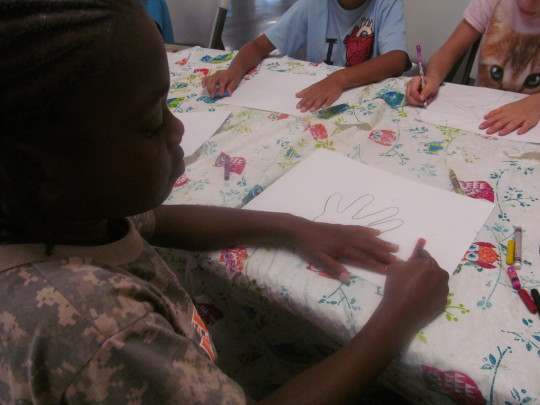
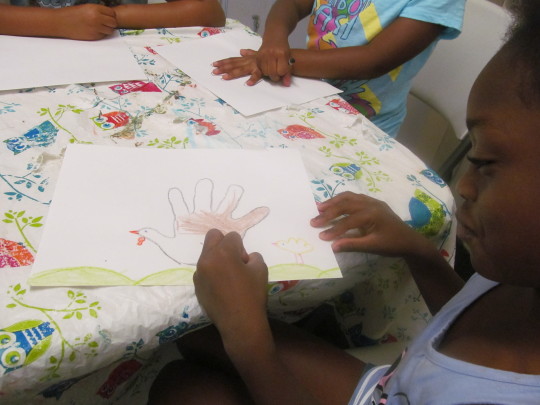

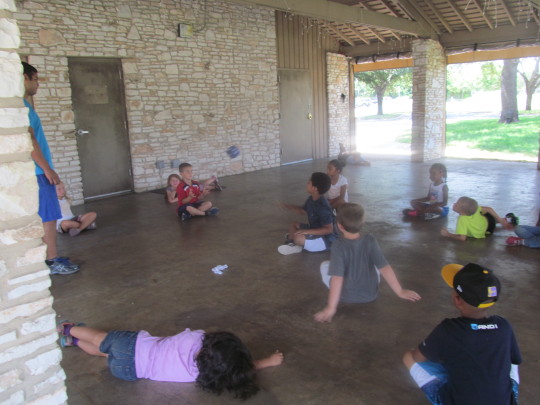

1.-2. Campers were excited to show off their drawing skills! The theme of the week was Holidays and, accordingly, campers were making Thanksgiving turkeys in a holiday setting.
3.-5. The facilities at Takas park were spacious! Outdoor options also included shaded areas to ensure protection from the sun.
#YMCA#ymca san antonio#Youth program#Summer camp#Summer program#Takas park#san antonio#texas#san antonio texas#excelbeyondthebell#Excel Beyond the Bell San Antonio#Excel Beyond the Bell#Excel Beyond the Bell SA#EBBSA#EBB#OST#youth development#youth empowerment#free meal#scholarship#physical education#physical activity#art#drawing#holidays#thanksgiving#expression
0 notes
Text
YMCA Power Scholars
This summer I also worked part time at a YMCA camp called Power Scholars. This was the second year of this new summer camp. Right now, San Antonio is one of only 8 sites around the country that offers this program! The camp was held at Hawthorne Academy, a school in SAISD, and was open for registration to all students ages 5-13. This is a YMCA camp that integrates both academics and physical education. The Power Scholars camp works to close the achievement gap and helps children who have not yet begun school prepare for reading and math. Like many YMCA camps, Power Scholars Academy has a split staff of four mentors/teachers assistants paired with a teacher in the morning and four different mentors who work alone during the afternoon. Power Scholars Academy runs according to the BELL Summer program. This learning experience combines academic instruction with hands-on enrichment activities, field trips, and service projects.
A day at Power Scholars Academy starts with breakfast and a recitation of the BELL Pledge. Scholars then transition into classrooms, where certified teachers and trained teaching assistants, like myself, lead small-group instruction in literacy and math. I worked as a teacher’s assistant for the pre-k-1st grade group, nearly always a group of 20 or more. I wrote lesson plans for the math portion of the morning using the curriculum they outlined. For the younger students, the curriculum usually included reading a children’s book that used math. I supplemented the lesson plan ideas they gave with some worksheets or activities I found from outside resources. This experience was extremely challenging and I have learned a little more about just how hard it is to be a teacher!
After lunch, scholars rotate through a series of enrichment courses and activities focused on topics such as STEM (science, technology, engineering, and math), creative arts, and health & exercise. Fridays, the students are taken on field trips to local museums, universities, parks, or other fun destinations.This experience has shown me how important it is to have staff that are willing to work hard to enrich students. It was a challenge for me to have so many students in one classroom, particularly students of such a young age.
It was an interesting experience to have this job while simultaneously working for Excel Beyond the Bell because I was learning about how a program like this was is run while also being one of the front-line workers.This camp is important to me because I bonded with many of the young scholars. I know that they are bright and I feel a responsibility to work hard to teach them something new each day. This was a challenging experience, and, now more than ever, I maintain an appreciation for and place importance upon youth development. I now have invested part of my life in these children and want to see them succeed!
#Genius#Genius within#Power Scholars#YMCA#Camp#San Antonio#Texas#Excel Beyond the Bell#EBBSA#EBB#Ring Together#Scholars#Summer Learning Gap#Summer Learning#Summer Learning Loss
1 note
·
View note
Photo


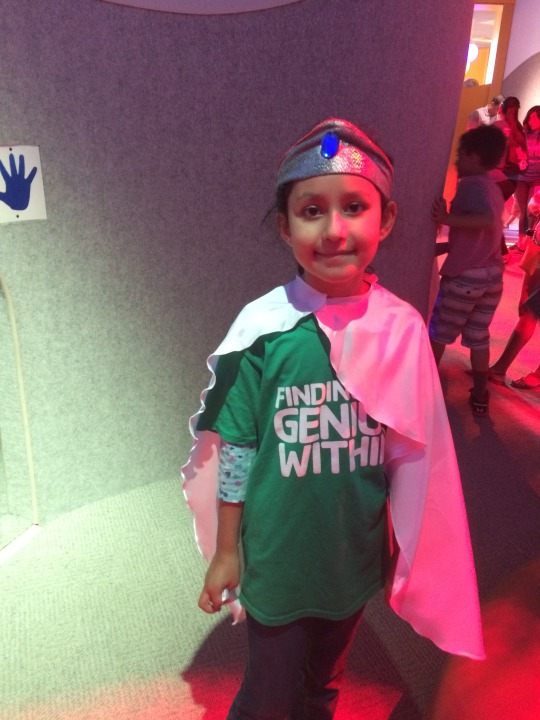


1.-3. The scholars visited the Do-seum as a part of the field trip Fridays!
4.-5. We as instructors gave the students tasks which aided them in Math and English/Language Arts
#Power Scholars Academy#BELL#YMCA#Power Scholars#Genius#Finding the Genius Within#EBB#EBBSA#Excel Beyond the Bell#Excel Beyond the Bell SA#Excel Beyond the Bell San Antonio#San Antonio#Texas#Summer Learning#Achievement Gap#Summer Learning Loss#DoSeum#Enjoy Learning#Learning is fun#PK#Kinder#First#Butterfly#Construction Work#Princess#Self Portrait#Alphabet
0 notes
Text
Presa Community Center
I visited the Presa Community Center (PCC) during their last week of their eight-week summer program. Here I was able to talk with Ashley Nicholas, the director of Youth Services. Ashley has an extensive background in working with youth programs and has dedicated her life to helping others. Previously, Ashley worked at a nonprofit camp in Waco, TX. Because of her work with this organization, she received a lot of great training that she still puts to use today. One of the teaching or mentoring styles she talked about was the strength-based approach. She explained that it is difficult but extremely important to find good staff. As she put it, someone who works with kids must have contradictory characteristics-- serious but fun, professional but relaxed, stern but gentle. Ashley trains the staff herself and makes sure they understand to treat the youth well and are willing to put in the work to adjust their interactions based on the personality of each child. One of my favorite things that Ashley said was that every kid deserves an irrational advocate. She truly believes in the students and wants them to succeed!
At PCC, 120 students ages 5-13 may participate in both the after school and summer programs. Students mainly come from two partner schools: New Frontiers Charter School and Riverside Park Elementary School. These schools are supportive to their students; Teachers walk students over to the center to make sure they stay safe. I was amazed to learn that up until only two years ago, all programs at PCC were free. However, the number of students who wanted to attend became too high so a lottery system was put in place and families are now charged a small fee for enrollment. During the school year, the program fee is $50 for the first student, just $25 more for a second child and, for three or more children, the price is fixed at $100, total. The summer program costs just $10/week! The community center also provides meals through a partnership with the San Antonio Food Bank. During the school year, students coming to PCC after school get dinner right when they arrive, around 4:30pm. This way, kids who get picked up earlier than others but who still do not have much food at home will have a meal ensured each day. During the summer program, kids are fed breakfast, lunch, and an afternoon snack.
The OST programs at PCC combine education with physical and fun activities. The community center has computers and the center partners with nearby middle and high schools to bring in students who may serve as reading buddies for the campers. During the after school program, the youth do homework and receive tutoring in addition to engaging in games and activities.
During the summer, students only stay out in the heat 20 minutes at a time and get plenty of popsicles to stay cool. Indoors, they do crafts and play games. At PCC, they believe that it’s important to get kids to play classic, outdoors games such as hopscotch, foursquare, and horseshoes; Technology is not allowed at camp. Also, the kids have reading challenges each week where they’ll be entered in a raffle. At PCC programs, staff members facilitate diverse clubs to meet the interests of the students. One of the most popular clubs centers around dance. These clubs are not for everyone, just for those who are genuinely interested in that particular topic. This way, the kids find both a passion and a way to enjoy learning.
Finally, kids participate in service learning. It would be too difficult to have all 120 kids go out and help the elderly or work at a soup kitchen so instead, students raise money for different charities. One way they do so is by participating in a reading challenge where kids get a certain amount of money for each book they read. The children are then allowed to donate the money they raise to the charity of their choice. Also, the older students are assisted with creating their own business from which proceeds are donated to charities. This activity simultaneously teaches independence and entrepreneurial skills.
I was truly impressed with the Presa Community Center. The community center is in a typically underserved location. Although they don’t have extensive resources, the camps they provide and the staff they hire are excellent! The students are the first priority and their welfare is on the top of everyone’s list. I could see that everyone had their heart in the right place at PCC. It’s clear to see that the work at this OST organization is invaluable for participating youth.
#Presa community center#Presa Street#San Antonio#Texas#Youth#Youth Development#OST#out of school time#Summer#summer camp#summer program#Service learning#community service#reading buddy#summer learning gap#summer learning loss#combat summer learning loss#physical education#teaching moment#conflict#games#foursquare#hopscotch#flag football#raspa sale#entrepreneurship#mentors#nonprofit#community#community impact
0 notes
Photo

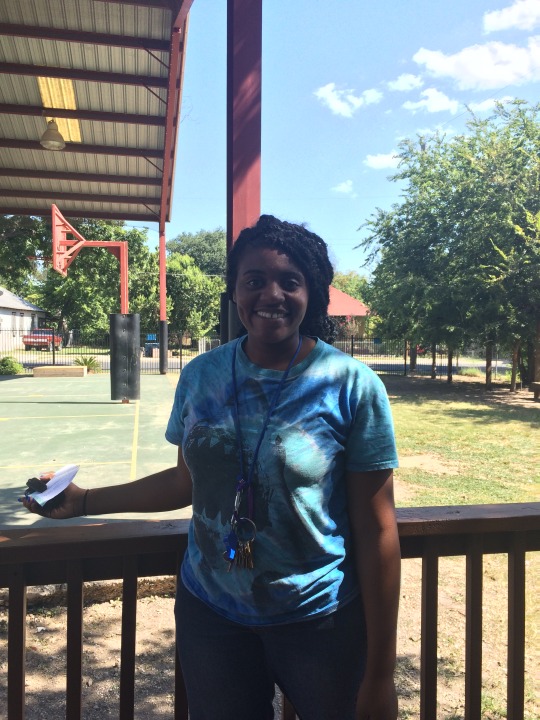

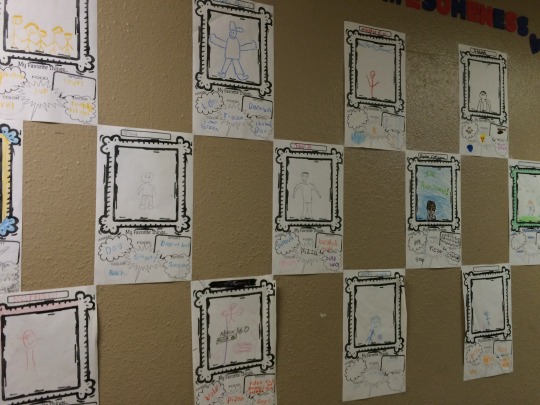
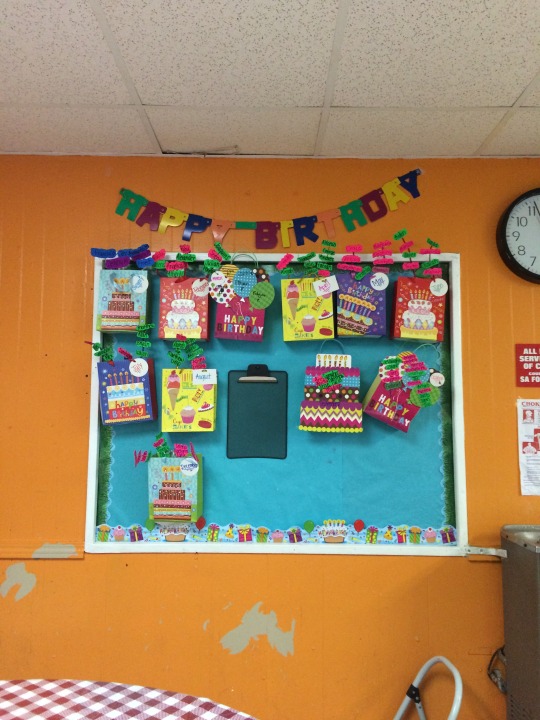
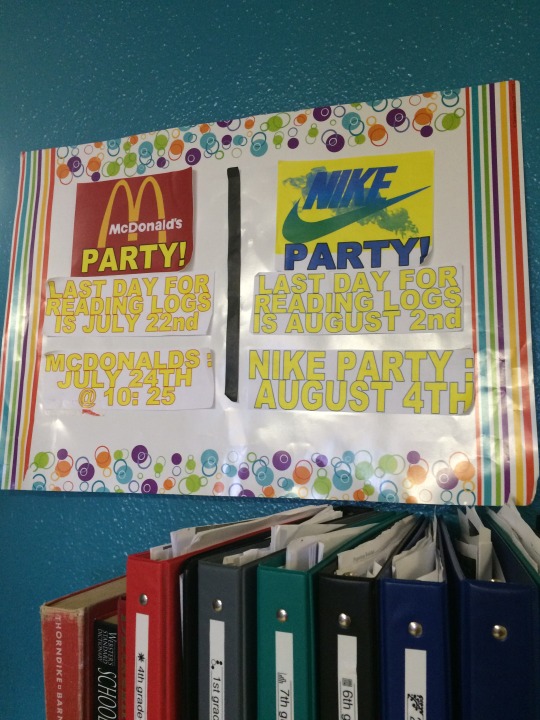
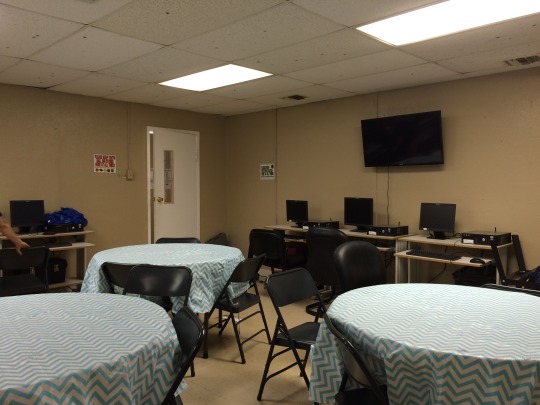
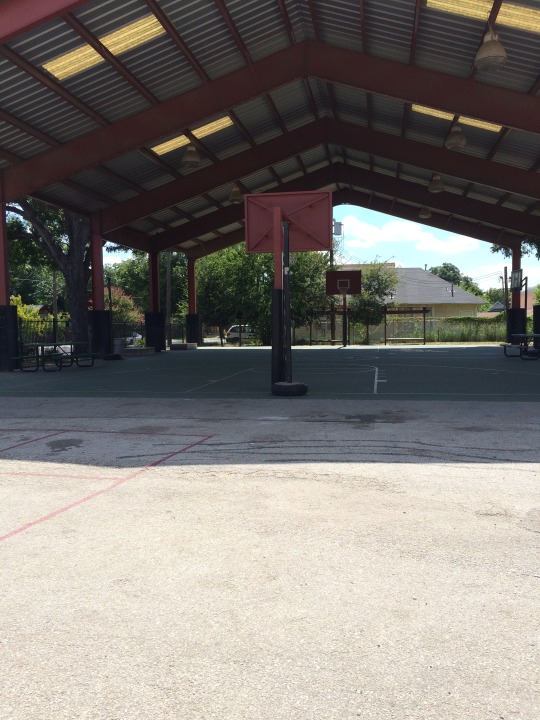

1. and 2. The awesome staff members at the Presa Community Center: Joseph, Nathan, and Monaija
3.Students have the opportunity to start their own business.
4. The walls are decorated with artwork to foster creativity.
5. Presa Community Center staff celebrates each camper’s birthday. I was told that, for some, it’s the only party they have on their special day.
6. Presa Community Center staff offer incentives for summer reading!
7. 8. and 9. The facilities at Presa Community Center.
#Presa Community Center#Presa Street#South East#San Antonio#Texas#OST#out of school time#Program#youth development#Service Learning#strength based approach#Art#Raspa sale#entrepreneurship#Community center#EBB#excelbeyondthebell#excel beyond the bell#Excel Beyond the Bell San Antonio#PCC
0 notes
Text
City Year SA- Corps Members
City Year recruits around the country for individuals, deemed corps members, to serve as teaching assistants, tutors, and after school program facilitators. I attended one of the trainings for these individuals, visited with them and learned more about what they will be dedicating the next 11 months of their lives to doing.
The target corps members for City Year are 17-24 years old and may have a wide variety of interests. Corps members serve on teams of 7-16 individuals. This school year, City Year has 105 members serving in 9 different schools in San Antonio. When applying for City Year, applicants may choose one of three options--serving where there is most need, applying to a region or applying directly to a site. This means that a team of corps members may include individuals from several different states. Before the corps members are assigned to a school, each member takes a survey to assess what interests match up between the members and the students from a school. Corps member diversity is important- the more varied the interests and experiences of the corps members, the greater the variety of learning opportunities for students. City Year staff make observations and track data from each school district every year to make sure that the core members do indeed have a positive impact. Also, teachers’ needs are not forgotten; teachers take surveys which allow them to express their opinions and experiences with the corps members.
A day in the life of a corps member is jam packed with duties. Before school, corps members monitor the students eating breakfast and check in with how the students are doing with homework and classes. Corps members make sure that the students they know have trouble with attendance are present and may help with unfinished homework. During the day, the corps members’ schedule mimics a teacher’s schedule in that they stay in classes and take notes to set a positive example for the students and so that they can help absent students catch up. They use their free time to call parents about absent students and plan for after school programming. Once a week, the corps members meet with a small group of students during lunch to set goals on how to do better in classes and propose rewards for success with those goals. Finally, clubs meet after school to add to the assistance the students are receiving during the day. This after school assistance begins with 45 minutes of tutoring. Next, students have a snack and conclude the day with fun time which is unique to the demands of students from each school. The corps members try not to make this after school programming too much like an additional class to ensure that the students continue to attend the sessions.
Because City Year is a national organization, it is extremely streamlined and well run. I was impressed by the enthusiasm I saw in the corps members being trained. It takes driven and energetic individuals to help teach! One of my favorite aspects of City Year is that it really allows for more individualized mentorship and tutoring and, often, there are even supplemental lesson plans to help individual students. With the work I have done this summer and in the past with students, I have experienced the difficulties in teaching a large group of students. More adult mentors in the classroom is exactly what students need so that no student is overlooked. City Year is helping all students reach their full potential!
#ebbsa#City Year#City Year San Antonio#City Year SA#CYSA#San Antonio#Texas#Orientation#Corps Members#Training#Nonprofit#Youth Development#National Organization#National Nonprofit#Mentors#Mentorship#Tutors#Summer Training#School Year#excelbeyondthebell#excel beyond the bell#Excel Beyond the Bell San Antonio#EBB#OST#out of school time#After school#education#education is power#knowledge is power
0 notes
Photo
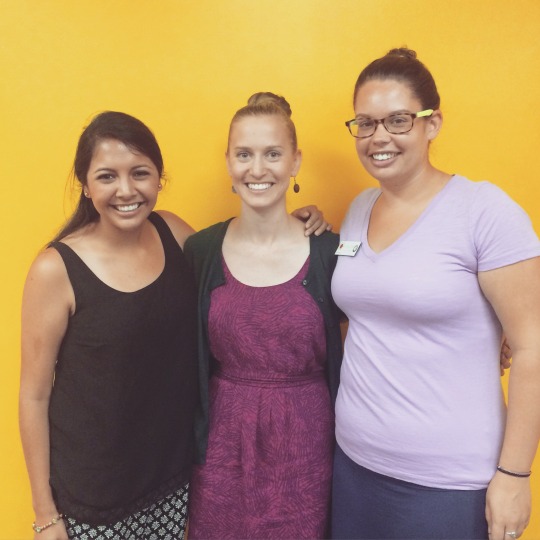
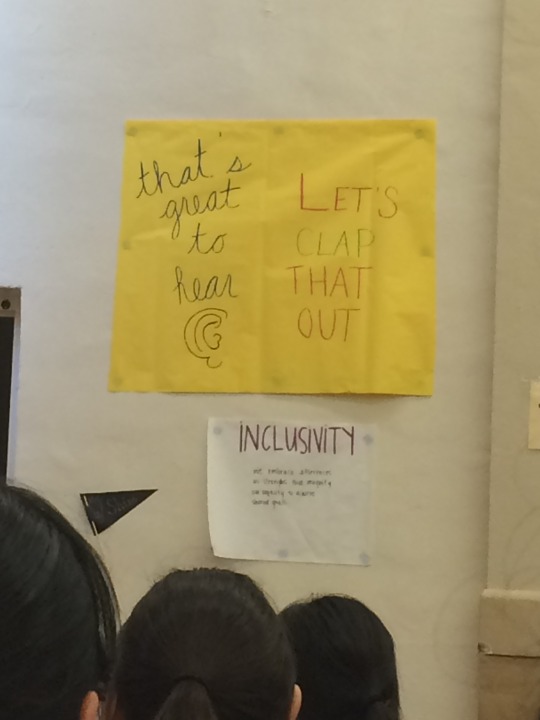
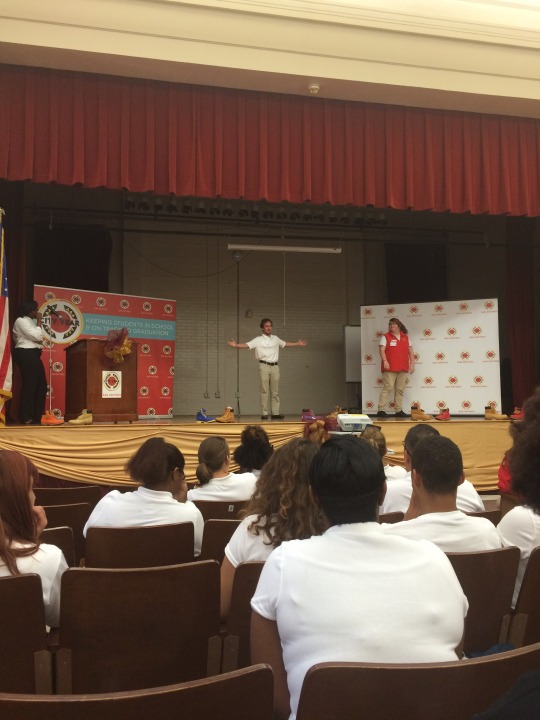

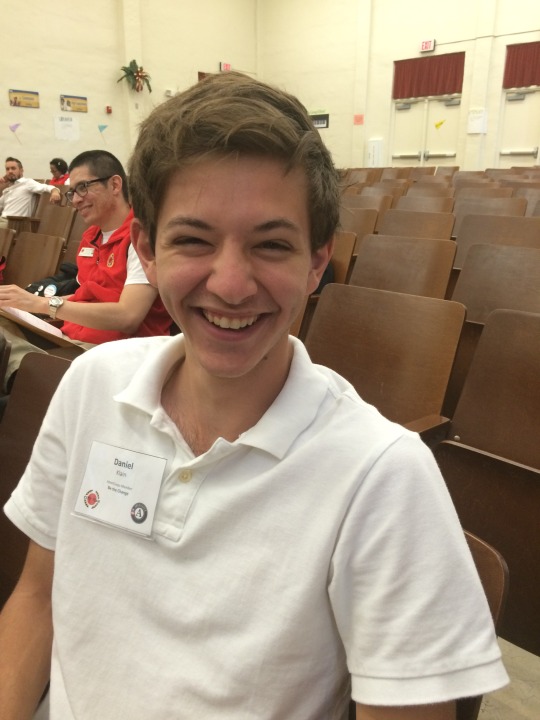
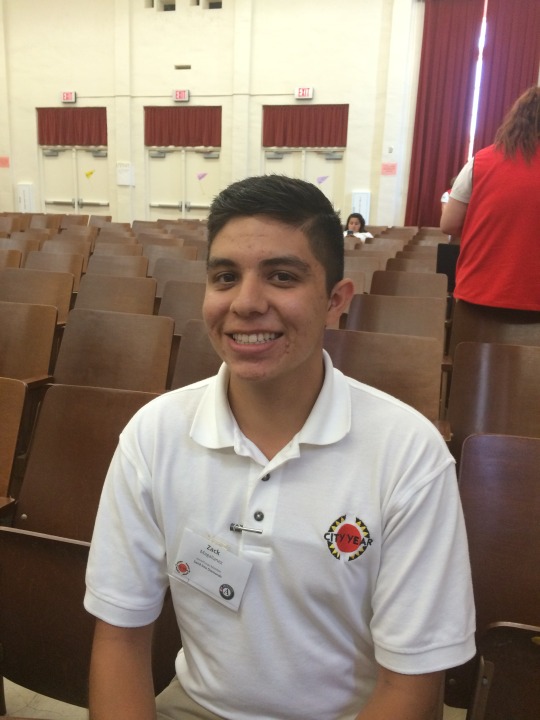

1. (from left to right) Sarah Garza is the regional recruitment manager at CYSA. She mainly recruits at universities but also visits college prep high schools. Megan Heron, Learning & Evaluation Director at CYSA, is from Florida and had never been to Texas before working for City Year as a corps member. Heather Kubicek, Impact Manager at CYSA, is from Iowa. She worked as a corps member for 2 years after college.
2. and 3. Training reminded me of college orientation! Appropriate mantras for use with students hung on posters on the walls and corps members created fun skits based on their job duties.
4. Destiny, from Georgia, and Devan, from Arkansas, were excited to make the move to San Antonio.
5. Daniel from Washington D.C. has worked with kids before in a program called America Scores.
6. Zack from San Antonio worked with another one of our partner organizations, Boy With a Ball, throughout high school.
7. A short description of EBBSA was included as part of the orientation lesson!
This summer, I made two visits to the San Antonio site for City Year, an AmeriCorps affiliate and one of EBBSA’s partner organizations. During these visits, I learned a lot about what City Year does and how they train corps members.
#EBBSA#City Year#City Year San Antonio#CYSA#san antonio#Texas#Orientation#Corps Members#Training#Summer training#Nonprofit#youth development#Mentors#Mentorship#Tutors#Wheatley Middle School#School year#excel beyond the bell#excelbeyondthebell#Excel Beyond the Bell San Antonio#EBB#OST#out of school time#After School#education#education is power#knowledge is power
0 notes
Text
City Year SA
This summer, I made two visits to the San Antonio site for City Year, an AmeriCorps affiliate and one of EBBSA’s partner organizations. During these visits, I learned a lot about what City Year does and how they train corps members.
City Year serves 26 cities in the U.S. in locations demonstrating the most need based on data from Math and English scores. In San Antonio, City Year serves students from 3rd to 9th grade but hopes to expand to elementary school students as well.The goal of this organization is two-fold: serving students in San Antonio schools in addition to fostering corps members. For corps members, City Year is an 11-month commitment wherein they will serve in schools as teaching assistants, tutors, and after school time facilitators. A stipend is provided to the corps members each month and, upon completion of the school year, corps members receive an education award to help pay off student loans. Then, corps members have an option to apply to either serve a second year or to be a team leader.
The admissions team works hard to help the corps members with their adjustment to a new city and a new lifestyle. Efforts are made to help the corps members find affordable housing. They get a VIA bus card for free and City Year connects the members as best as possible via social media and during orientation in order to create relationships for possible roommate pairings.
Corps member training began last Monday at 8:00 am at Wheatley Middle School, one of the schools that City Year serves. Training for corps members reminded me of college orientation: members participate in icebreakers and team-building challenges. Training also helps corps members become accustomed to City Year culture and educates the members about nonprofit organization history as well as partnerships City Year has in San Antonio (Like EBBSA!). Corps members will continue training and will be observing in their assigned school until October when they will step in and begin to work directly with the students.
As you’ll read in my next post, I had the chance to speak with some of the corps members about their experiences during training and their transition to a new city. The enthusiasm I saw at the corps member training made me optimistic about the upcoming school year! As I’ve learned, enthusiasm is key to keep students excited and engaged.
#City Year#San Antonio#Texas#Americorps#NonProfit#Organization#Education#Mentor#Mentorship#Teaching#youth development#Corps#OST#out of school time#EBBSA#excelbeyondthebell#Excel Beyond the Bell San Antonio#Brighter future
1 note
·
View note
Photo



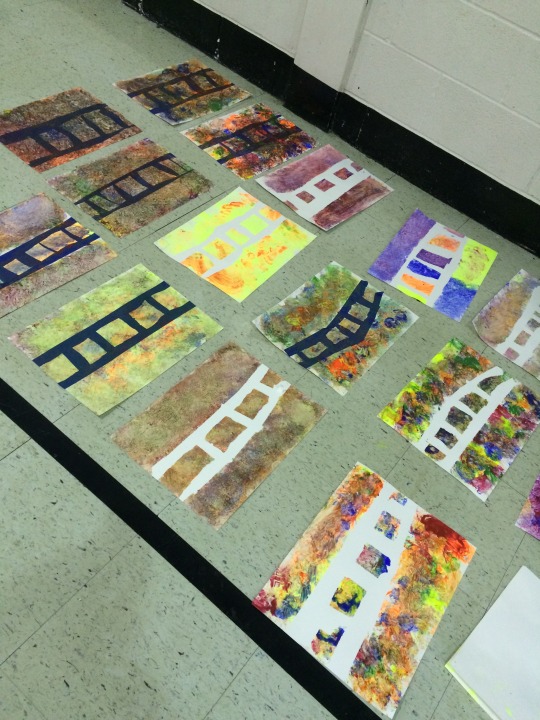

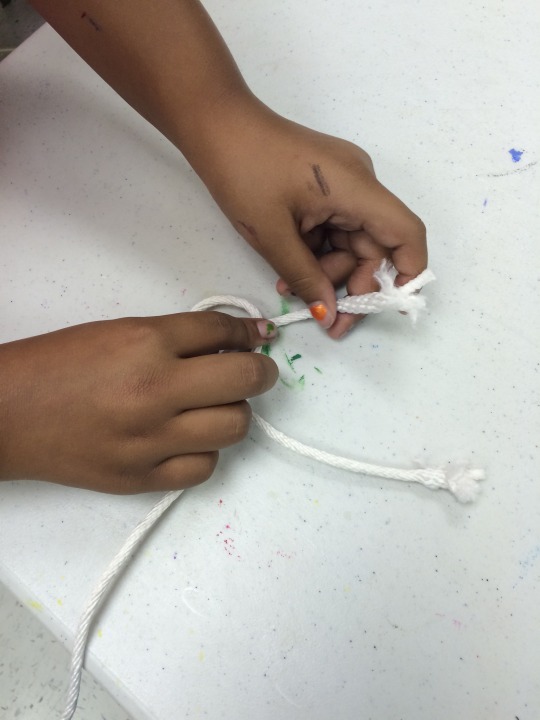
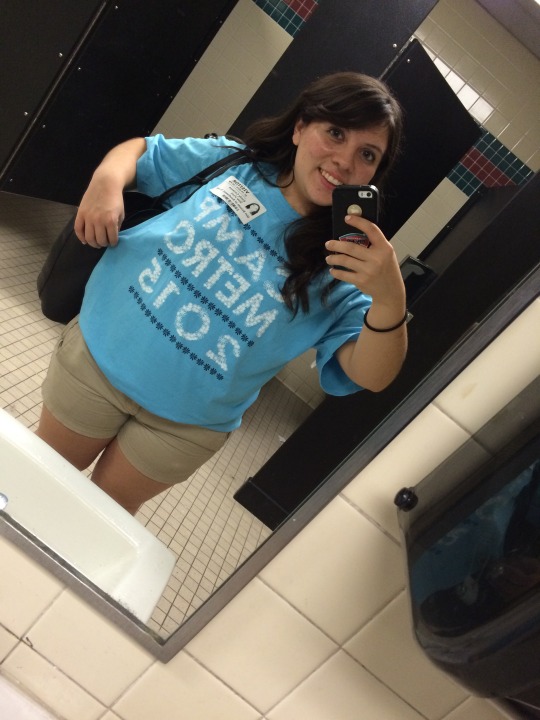

1., 2., 3. Inspiring, artistic posters lined the walls in the hallways.
4. and 5. The kids created artwork inspired by Monet and practiced their still life skills.
6. In their free time, the girls engaged in fun activities on their own, such as tying knots!
7. I felt at home at Camp Metro. The staff even gave me an awesome shirt so I would feel even more welcome!
8. Awesome Camp Metro staff members!
#Camp Metro#Girl Scouts#GSSWTX#Girl Scouts of Southwest Texas#San Antonio#Texas#Westside#2015#Summer#Camp#OST#Girl Power#Female empowerment#Youth Development#EBBSA#EBB#excel beyond the bell#excelbeyondthebell#Excel Beyond the Bell San Antonio
2 notes
·
View notes
Text
GSSTX Camp Metro
Girl Scouts influenced my life in a huge way. Here, I had the chance to explore my interests in robotics and art. I earned my Gold Award and, ultimately, I learned about the amazing things girls can do. Because of my experiences, I was delighted to be invited to Girl Scouts’ Camp Metro. This camp provides girls grades K-8 with the opportunity to gain hands-on experience in different areas each week including community service, healthy living, environmental awareness and more. At this fun camp, like at all Girl Scout events, girls earn patches and get guidance from camp staff to develop skills they may use to make a difference in the world.
As mentioned before, the camp features a different theme each week. Because I am an artist myself, I scheduled my visit during art week. In the morning, the girls went through the daily Girl Scout flag up ceremony where they raise the flag and make any announcements they may have. Throughout the day, the girls completed multiple art projects based on the ideals of famous painters and painting movements. When I arrived, the campers were creating blot paintings based on Claude Monet’s Impressionist paintings of bridges. Earlier that morning they had created portraits based on Pablo Picasso’s work. After painting, the girls moved to the final station where they used toy food, dolls and silverware to practice still life drawing. The end of each day consisted of each group meeting and, finally, gathering outside for the daily flag down ceremony.
What struck me most about this camp was the engagement by the mentors. There are two levels of mentorship: program assistants, grades 9-12, and group leaders, college students. I talked with one program assistant who had previously been through the camp. She was happy to share her experiences with me and her enthusiasm for the program showed through. She admitted to me that when she first signed up to volunteer as a program assistant, she was first interested in obtaining volunteer hours. However, after already completing her hourly requirement, she has stayed with them for the remainder of the summer because she genuinely enjoys working with the girls.
The groups are split up into age groups. The mentors have the same age group all summer but the groups vary because girls can enroll on a weekly basis. During my visit, I met with Miosha, Alisha, and Alex, three of the group leaders for girls going into second and third grade, or ‘Brownies’.I had a great discussion with Miosha. She stressed that she loves how it feels like a family at Camp Metro and noted how willing everyone is to celebrate and support one another. In fact, it was one of the program assistants’ birthdays the day I visited and, at the end of the day, the entire camp celebrated the birthday girl. This was a stark example of the camaraderie and community building characteristics of a Girl Scout event. Although it’s been awhile since I was a Girl Scout, my visit showed me that these characteristics truly have stood the test of time!
4 notes
·
View notes
Text
Seton Home
Recently I visited Seton Home, a location that functions as a safe haven for girls ages 12-18 that have experienced trauma and have thus been moved to the facilities by CPS or family. Seton Home provides therapy, academic help, medical services and childcare onsite. The girls live on the premises and staff is available 24 hours a day. During the school year, the girls attend charter schools around town mainly because they are more lenient about absences than public schools. Seton Home also sees to it that the girls are enrolled in college after they graduate from high school and allows the girls to use the site’s facilities until they are 21.
The girls living at Seton Home are usually one to two years behind in school so the summer is a critical time for them to catch up. The program that I learned about during my visit is an 8-week, intensive program in which the girls attend two, two and a half hour classes during the day--math and English. These classes aim to fit four nine weeks’ worth of coursework into this truncated time period. The girls also receive tutoring in the morning before class and staff has meetings each week to discuss who is in need of special attention or help. Here, the girls earn credits they may have previously lost and, in some cases, graduate early.
Jim Fleetwood, a math teacher at Burbank High School, has worked for five years at Seton Home. He began in their tutoring program working with the girls on Wednesdays after school but soon expanded to become the math teacher of this summer program. He was a history major but loves math. This multi-discipline expertise influences Mr. Fleetwood’s specific teaching style, whereby mixing multiple school subjects, he is able to integrate not just book knowledge, but also life experiences into his lessons. He highlighted the importance of observing the “organic unity of knowledge”.
Mr. Fleetwood said that he can usually cover more algebra in 8 weeks at Seton Home than in a whole year at Burbank because the girls are motivated and because they realize their success is not just about themselves as many of them have children. He also said that the girls are good caliber students and have the desire to achieve. He also notes the small class sizes as a large help in their progress. In previous years, there have been 8-9 girls per class period but this summer there are only around five total students.
Nicole Garza-Martinez, an English teacher at Warren High School during the school year, is the English teacher for this summer camp. This summer is her first experience working with Seton Home. Mrs. Martinez notes that her experience with other academic summer programs helped her immensely with knowing how to plan backwards in order to craft a lesson plan that is severely truncated. Her teaching style stresses both the importance of making manipulatives for the girls to aid in their writing and utilizing technology. For example, she gives them all calendars and worksheets to plan their papers and she shows the girls videos of plays that they are studying in order to help them grasp the content.
Mrs. Martinez echoed Mr. Fleetwood’s sentiments about the productivity she sees in this summer program. She also adds that the long class periods help with giving the girls more time to read aloud in class and discuss texts. Mrs. Martinez appreciates how Seton Home gives the teachers freedom to craft their lesson plans as they see fit and notes that it seems like the girls who live at Seton Home genuinely want to be there.
The familial atmosphere of this organization impressed me. Upon talking to the staff and the teachers, I could see that they genuinely care about the well being of the girls who attend this program. More notably, these adults respect the girls for the work that they put into their studies. To show their appreciation, all accomplishments are celebrated and a ‘student of the week’ is routinely chosen to underscore the girls’ efforts. Both teachers seem to have a personal stake in their work with this program. Mr. Fleetwood shared that he was motivated to continue his work at Seton Home because he wanted to serve as a good male role model for the girls. Mrs. Martinez shared that this experience has been extremely humbling; she is amazed at all that the girls can achieve despite all that they have to deal with on a day-to-day basis and, because her mother was a teen mom, she understands the importance of her work with this organization. Seton Home is an impressive organization that is doing great work to give back to their community.
#Seton Home#San Antonio#Texas#Community Service#Childcare#Counseling#Academics#Female Empowerment#Aid#Collegebound#Summer Program#Math#English#ELA#Youth Development#OST#EBBSA#EBB#Excel Beyond the Bell#Teen#Education
0 notes
Photo
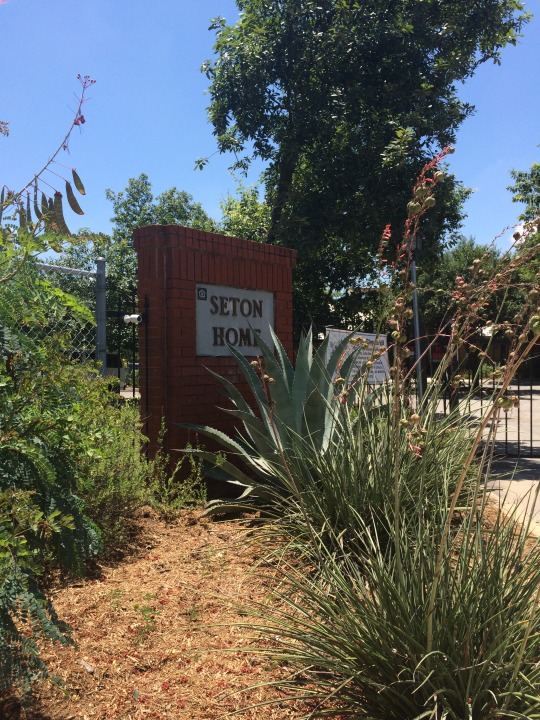

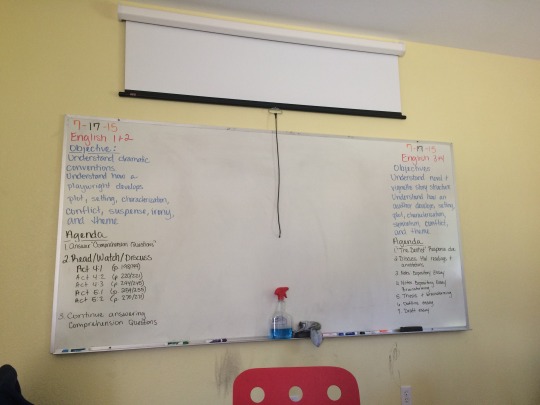
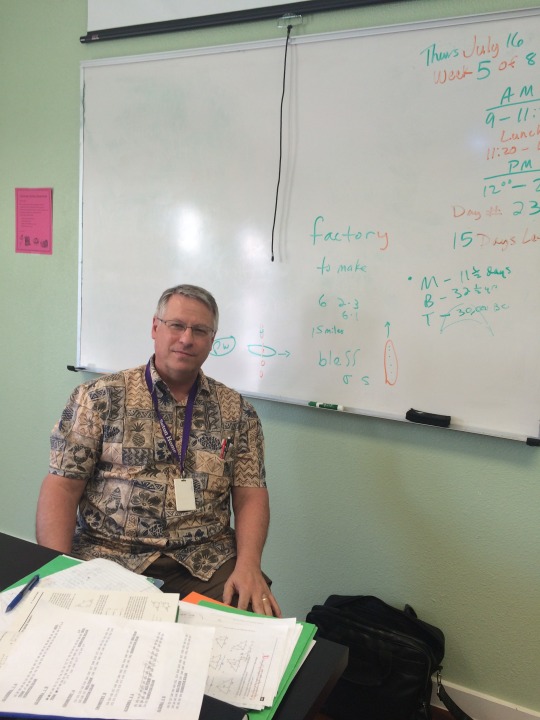
1. Tucked away on Old Mission Rd., Seton Home provides amazing care and services to the girls that are placed in their care.
2. Seton Home has a familial and welcoming atmosphere.
3. Mrs. Martinez plans out her class on the board each day.
4. Mr. Fleetwood schools me on his method of teaching and the “organic unity of knowledge”
#Seton Home#San Antonio#Texas#OST#Summer Program#Education#Graduation#Collegebound#ELA#English#Math#Credits#Teachers#Mentors#Female Empowerment#Community Impact
1 note
·
View note
Text
SAY Sí Sunflower House Art Camp
One of our partner organizations, SAY Si, provides services to the community that are not as well known as their main tuition-free middle school and high school multidisciplinary arts programs. One such program is the Botanical Gardens Sunflower House Art Camp. I was excited to return to this area of the Botanical Gardens as I used to participate in the youth gardening program, also held in the Sunflower House. Through SAY Sí’s ABC (Artists Building Communities) program, alumni students are able to teach art workshops for children from San Antonio's shelters and agencies for disadvantaged youth. Here, summer campers have respite from the troubles in their daily lives. Artist-instructors help the children focus on self-development and self-awareness as they make art and explore and enjoy the Garden. The day that I visited, the instructors teaching were Nina Cortez, SAY Sí class of 2011 and Laura Cordova, SAY Sí class of 2009, two skilled artists well versed in working with youth.
The workshop size is small which allows campers easier access to one-on-one instruction. We started with an introduction of the instructors and the project in which the campers would be working. The instructors demonstrated how to paint with watercolors and then worked with students to make their own creations. After cleaning up the paints, we distributed sketchbooks and began our short trek into the gardens. We visited the sunny rose garden which had an amazing fish pond fountain. Our group also saw gardens filled with bright flowers and odd plants. Along the way, the children had so much fun sketching the colorful foliage, tossing pennies into the fountains and marveling at the butterflies. Finally, we hiked up to the look-out tower. The children were in awe of how much of the city they were able to see. The paintings had dried by the time we returned from our walk so we redistributed the work and the children used sharpies to create their own free-form designs amongst the colors. I loved working with these children - they were incredibly sweet and delightfully curious! The whole experience was peaceful and cathartic for me. The small group size allowed us all to really enjoy each others’ company. Also, the gardens were so quiet and being surrounded by nature and the warm summer sun somehow revitalized me. I have confidence that the children felt the same way about their time at the camp. They left promising to return the next day, excited for what art project they would create and for what new area of the gardens they would be able to enjoy.
#Sunflower House#Botanical Gardens#San Antonio#Texas#Garden#Arts#Say Si#Youth Development#Summer Camp#Peaceful#painting#Out of School Time#Arts Organization#Southtown#Respite#OST#EBBSA#EBB#Art Camp
0 notes
Photo




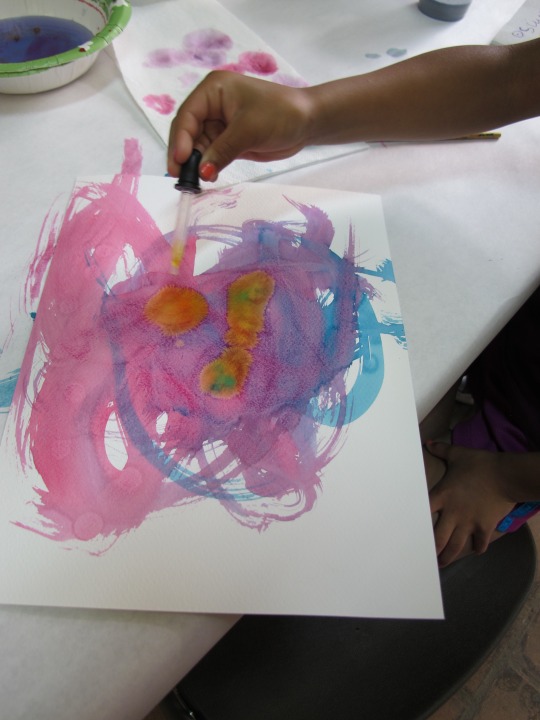

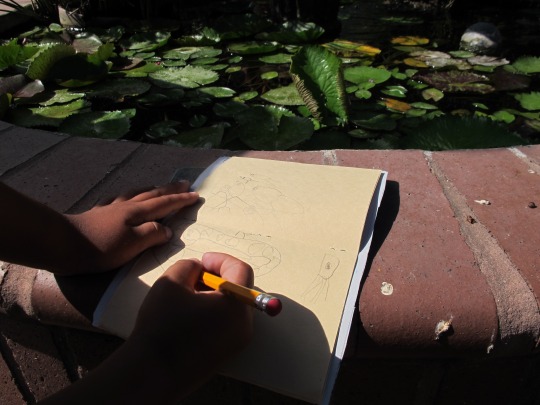


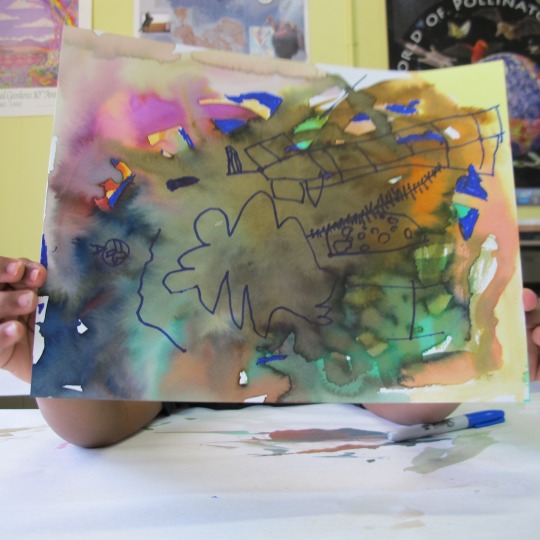
#Sunflower House#Botanical Gardens#San Antonio#Texas#Youth#Youth Development#OST#Out of School Time#SAY Si#Gardens#Sketching#Art#Art Organization#Painting#Volunteers#Alumni#Mentors#Respite#Cathartic#EBBSA#Excel Beyond the Bell#Art Camp
3 notes
·
View notes
Text
MS Women’s Center: Girl Zone
I recently visited Girl Zone, a camp run by the Martinez Street Women’s Center. This program is a year-round out-of -school-time program for girls aged 9-14 in the East and South East sides of San Antonio that integrates Mexican American Studies. This program also enlists the help of 8 high school mentors (juniors and seniors). Girl Zone was established in 1999 and annually serves 250 girls. The curriculum includes: Healthy Relationships, Sex Education, Leadership/Service Learning, STEM, Arts and Culture, Health and Fitness, and Media Literacy. Throughout the summer, the girls have day-long activities at a local park and also take field trips to educational sites around the city. When I visited, the girls had just completed a session with UTSA where they would attend classes at the university twice a week for three weeks. The girls shared a bit of what they learned during those sessions about cultural appreciation and mathematics. For example, the girls told me about their experiences with learning how to use the Nepohualtzintzin Abacus, a Mesoamerican counting device.
Before diving into their camp work, the girls recited a poem by Luís Valdez entitled, In Lak’ech: You are my Other Me. They recite this poem everyday in an attempt to instill ideas of empathy and integrity. I visited during what is called “power hour”. During this time, girls had the option to learn dancing and play other physical activity centered games outdoors or to stay inside and discuss an important topic. I stayed inside and sat in on the topical activity. That day, the girls were discussing gender roles and stereotypes. In this activity, the girls were split into groups of 3 or 4 and were given the task of writing two columns of descriptive words and phrases--one about what it means to be a boy and the other about being a girl. The girls were given some time to develop their ideas and when time was up, each group presented their answers. Most groups echoed stereotypes such as “girls wear dresses and makeup” and “boys don’t cry”. Their camp leader wrote down the phrases and noted the most common ones. Afterwards, the girls had a thoughtful discussion about the impact of these phrases on both girls and boys and, ultimately, came to the conclusion that every individual has the freedom to blur the lines of what is deemed to be socially acceptable acts for a specific gender.
Upon visiting this camp, I felt two emotions--amazement and jealousy. I wish that I had had the opportunity to participate in something so empowering as this all-girls, open-minded program. I was sincerely impressed by what the girls explore in this program: female empowerment through cultural appreciation and academic achievement. I myself am still working on addressing these very topics! This program deserves accolades for the way it is preparing these girls for the future.
#Female Empowerment#Girl Power#Girls Rule#Girl Zone#MSWC#Martinez Street Women's Center#Gender Stereotypes#Gender Norms#breaking social norms#breaking social constructs#Breaking the Norm#Cultural Appreciation#Mexican American Studies#nepohualzintzin#abacus#Lak'ech#You are my other me#Poetry
1 note
·
View note